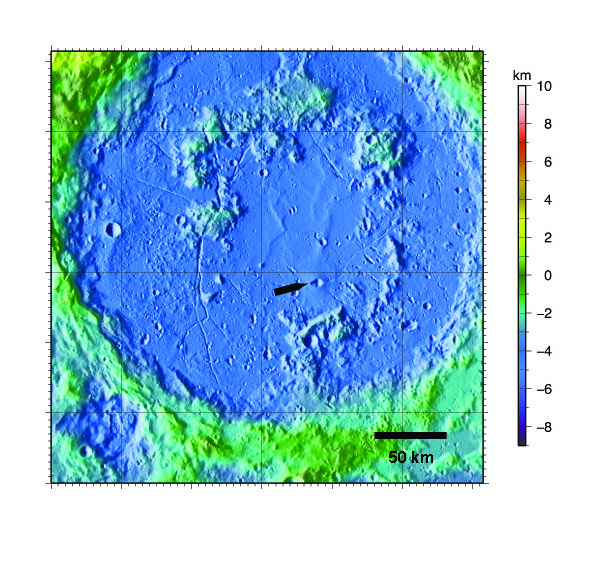
Schrödinger Impact Basin
The Schrödinger impact basin (centered -75.0o, 132.4o E), located on the lunar far side within South Pole-Aitken Basin, is not visible from the Earth. The basin is believed to be the second youngest impact basin on the Moon (the youngest being Orientale).LOLA data reveal that the basin has approximately 3.3 km of relief from rim to floor. The basin's inner ring is clearly visible, as are lunar rilles, smaller impact craters, and a volcanic cone (see arrow). The cone is believed to be pyroclastic in nature, largely due to the dark halo that can be seen surrounding it in visible light images. The LRO narrow angle camera has also captured a view of the cone. Additional evidence for volcanic activity comes in the form of rilles and the relatively flat and smooth basin floor, which is most likely the result of infill by lava flows.Schrödinger basin is named for Erwin Schrödinger (1887-1961), a theoretical physicist who received the Nobel Prize in Physics in 1933 for the development of the Schrödinger equation and it contributions to quantum mechanics.
